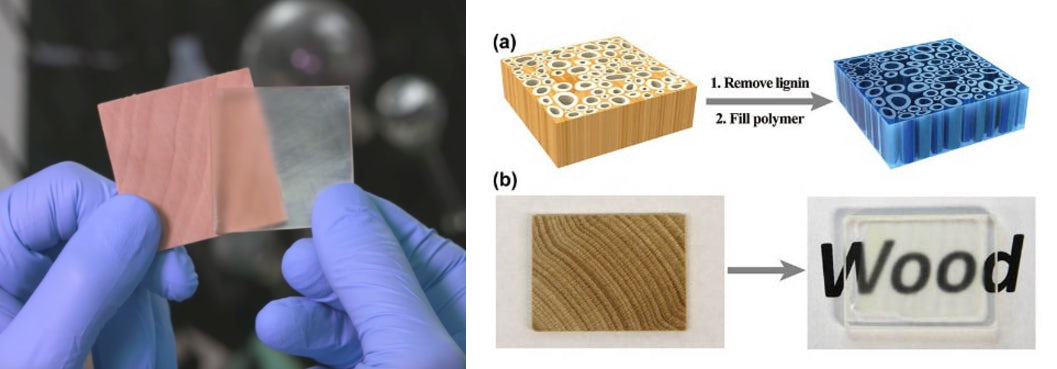Find the perfect windows for your next project through Architizer’s new network marketplace for building-products. Click here for more information. It’s free for architects.
For centuries, window frames and glass panes have remained inseparable. While it’s nearly impossible to envision a window without glass by its side, like most relationships, theirs hasn’t been without hiccups or challenges worth solving. Glass has championed the world of windows for its incredible ability to completely block moisture, remain unaffected by UV rays and transmit light. However, as a nonrenewable resource, the material’s sustainability is often thrown into question; especially at the massive scale at which it is used in architecture today. And so, maybe their partnership won’t last forever.

Located at the University of British Columbia in Vancouver, Brock Commons by Acton Ostry Architects is the tallest structural timber building in the world; image via World Architecture News.
As engineers and designers are continually rethinking the aesthetics and structural methodologies of buildings, timber is often billed as the answer to creating greener cities, and right now, the world is witnessing a remarkable tipping point in time. With buildings like Acton Ostry Architects’ Brock Commons already in existence and others like PLP Architecture’s 80-story Oakwood Timber Tower proposing to shoot up across London’s skyline, timber is edging toward being accepted as a suitable structural material for very tall buildings — a reality deemed shaky not too long ago. What if windows were timber’s next architectural frontier?
Unthinkable as it may be, engineers at the University of Maryland, College Park, have created a clear wood that is stronger and more durable than untreated timber. The product is the result of a fascinating two-step process.

Left: before-and-after comparison of transparent wood, image via the University of Maryland; right: two-step chemical treatment process used to create transparent wood, image via CNN by the University of Maryland
The first step is to boil the wood in order to chemically remove any traces of lignin — an organic substance found in vascular plants. Not only is lignin responsible for the brown and yellowish color in wood, but it is also ‘nature’s natural glue’ and makes the material rigid. This portion of the process, which makes the composite crunchy and colorless, takes 10 minutes to complete on a small piece of wood and up to 24 hours for an entire log.
The second step is aimed at regaining the strength of the wood by injecting an epoxy into its veins. The strengthening agent is soaked up by the walls of the channels, making the wood incredibly robust. No stranger to the world of architecture, epoxies are commonly used to reinforce composite materials used for buildings. This final piece of the process, which is done to maintain the makeup of cellulose nano-fibers, takes about an hour.

Transparent wood in its final form; image via CNN by the University of Maryland
Once dry, the result is an extremely tough wood with an enviable list of accolades: It is lighter than concrete and steel, more biodegradable than plastic and able to withstand 10 times more stress than normal wood. According to Dr. Liangbing Hu of the University of Maryland’s Department of Material Science and Engineers, this is the first time scientists have been able to simultaneously maintain the backbone structure of the wood, make it transparent and make it stronger. But will it revolutionize design concepts? The promise is remarkable.
Wood already “acts like a lockbox for carbon dioxide, sequestering excess CO2 from the air.” Once treated in this way, Hu and his colleagues’ study reveals that transparent wood composites exhibit a high optical haze, which not only results in a beautiful quality of scattering light, but also keeps the light dancing around nearby. They postulate that if you were to place the transparent wood in front of a solar cell that is used to create electricity, the amount of light absorbed would rise and increase efficiency by up to 30 percent.

Diagram of a small model house with a transparent wood panel in the ceiling; image via the University of Maryland
In a follow-up study led by Tian Li, scientists at the University of Maryland tested the material by putting a transparent wood panel in the ceiling of a small model house. They found that the treated wood let in just a little less light and a lot less heat than glass. To create the window, the wood was cut against the natural grain so that the already-existing channels that drew water and nutrients up from a tree’s roots were oriented along the shortest dimension of the window. As the angle of the sun shifted throughout the day, the channels were able to guide sunlight through the panel in a shockingly uniform way. “This means your cat would not have to get up out of its nice patch of sunlight every few minutes and move over,” Li said.
As a lightweight renewable resource, timber will remain at the helm of creating greener architecture and cities. Similar to the promise of tall timber skyscrapers, the tricky question will continue to be: How will the material scale up? While the researchers at the University of Maryland say that the wood can be of any size, we are still a long ways away from seeing a curtain wall entirely made of transparent wood. What we may be witnessing is the subtle hint at a break in the historic distinction between window frames and glass panes.
Looking for the ideal windows for your next project? Search for them on Source, Architizer’s new community marketplace for building-products. Click here to see if you qualify. It’s free for architects.









